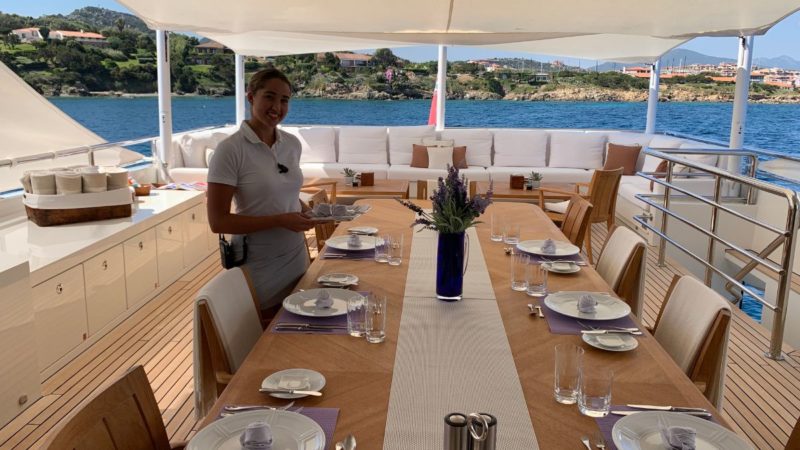Recently I have been asking an increasing number of the yachts we are partnered with to do some investigation about the true cost of crew turnover onboard. Without fail, every yacht was surprised with their findings and even more so when we mentioned the additional costs that they hadn’t considered.
There are all the obvious tangible costs like crew agency fees and flights, accommodation, possibly quarantining for COVID, uniform, onboarding, training etc. Although there are a lot of them, they are relatively easy to track if you adopt decent record keeping.
However, there are also many hidden costs which can be significant when you tally them up.
An old poll conducted at Monaco Yacht Show in 2014 suggested that crew turnover in the yachting sector is between 10% and 30% a year, however, I think the reality today is that is sits at more like 20% to 40% for most yachts. Whilst there are some whose turnover is less than this, it is increasingly rare. There is also a significant percentage whose turnover is much higher.
Cost of time
Here’s a surprisingly expensive example of the hidden cost of crew turnover.
A 100m yacht employees two Chief Stews at $10k a month each. So, the monthly cost of those Chiefs, just in salary, is $20k. For ease of maths, let’s say they do 200 hours of work in a month. That works out at $100 an hour. On a 100m yacht there could easily be some quite significant turnover which means every single month there are recruitment requirements in the interior department, sometimes for more than one position. If a Chief Stew briefs agencies, files all the CVs/emails coming in, reads every CV/ email, interviews multiple candidates, does second stage interviews, gives feedback, and does some reference checking, they could easily spend 10 hours working on filling a single Stew role. And that’s an optimistic 10 hours, 20 hours is not unreasonable. That’s $1,000 of their time, minimum.
Then the Captain, whose hourly rate works out at $200, also spends two hours on this process to hire a Stew. That’s another $400. Then the purser books flights, gets documents, liaises with family office for another two hours at $100 an hour. That’s $1,600 in Captain and HOD time used for that one hire. And we haven’t even looked at the family office costs for HR, legal, accounts etc.
The intangible costs?
Much harder to quantify, but arguably far more expensive, are the intangible costs of crew turnover. According to Business News Daily, just a third of costs are ‘hard’ in shore-based industries, leaving some 66% of additional costs to be worked out.
When the Dive Instructor who is guiding the bosses teenage children through their PADI qualifications leaves, what is the loss to the owner? For the rest of the trip there are two disappointed teenagers complaining to their parents because they can’t dive daily.
If you lose a long term HOD, this also impacts on boat maintenance and refits, especially in engineering, because you have lost some of that invaluable knowledge. This all leads to a less efficient operation until new crew members are up to speed.
Another intangible cost is the knock-on effect on other crew. Does their favourite HOD leaving negatively affect their productivity or make them look elsewhere too? It’s certainly possible. If one of your HODs is amazing and leaves you can virtually guarantee it has a negative impact on the team as even if you replace them with someone brilliant it takes some time to get up to speed. Of course the opposite is true. If your HOD is average you can probably significantly reduce turnover by getting rid of them and hiring someone better.
Financial consequences
One yacht we spoke to that did a fairly exhaustive breakdown of the costs worked out that the cost of crew turnover for a junior position was $21,000. Another yacht came up with a figure of $30,000. I feel it’s a minimum of €15,000 rising in multiples for an HOD.
There are various land-based studies which would suggest the financial cost at a junior level is equivalent to one year’s salary for the employee in question. Once you start moving towards a senior level the cost rises significantly.
According to this land-based study, the cost of replacing a technical position costs 100-150% of the annual salary, while employee turnover at Director or C-suite level (equivalent to a Captain) is over 200%.
What can be done to reduce costs relating to crew turnover?
This is far from a complete list, this is just some low hanging fruit that yachts can implement relatively easily.
- Treat crew agents as partners, assuming you use them
- Have a consistent, solid recruitment process
- Recruit for personality first and foremost in junior roles
- Ensure your Employer Value Proposition (EVP) is strong
- Conduct performance appraisals of crew
- Put all Captains and HODs through decent leadership courses
- Conduct exit interviews to find out why crew are leaving the yacht
What does all of that actually look like and mean? Quay Crew do more than crew recruitment and support our yachting partners with all aspects of crew retention, training, EVP and building a good culture. If you want to find out what your crew turnover is really costing you and how you can reduce that then email me at tim@quaycrew.com to schedule a call.





